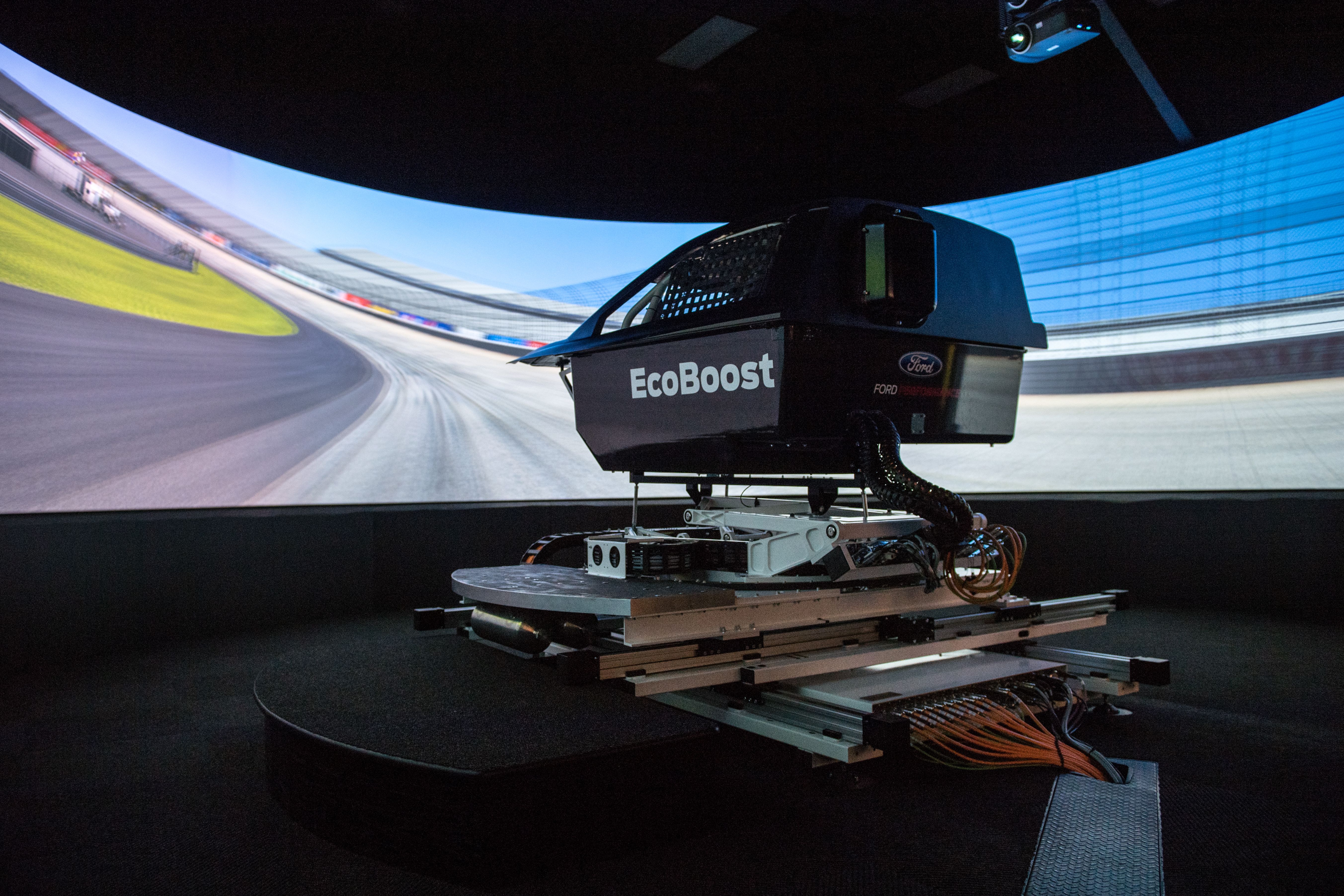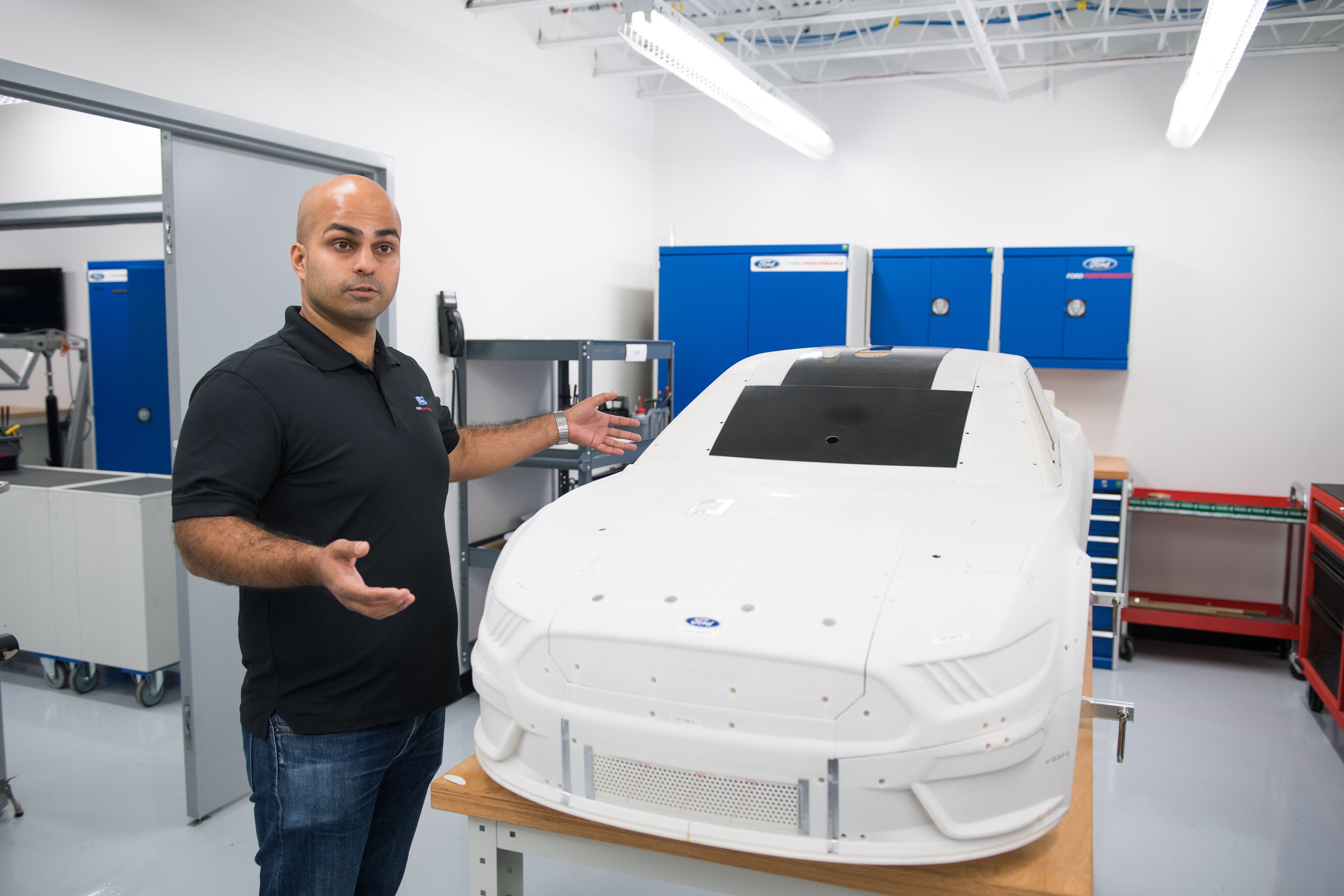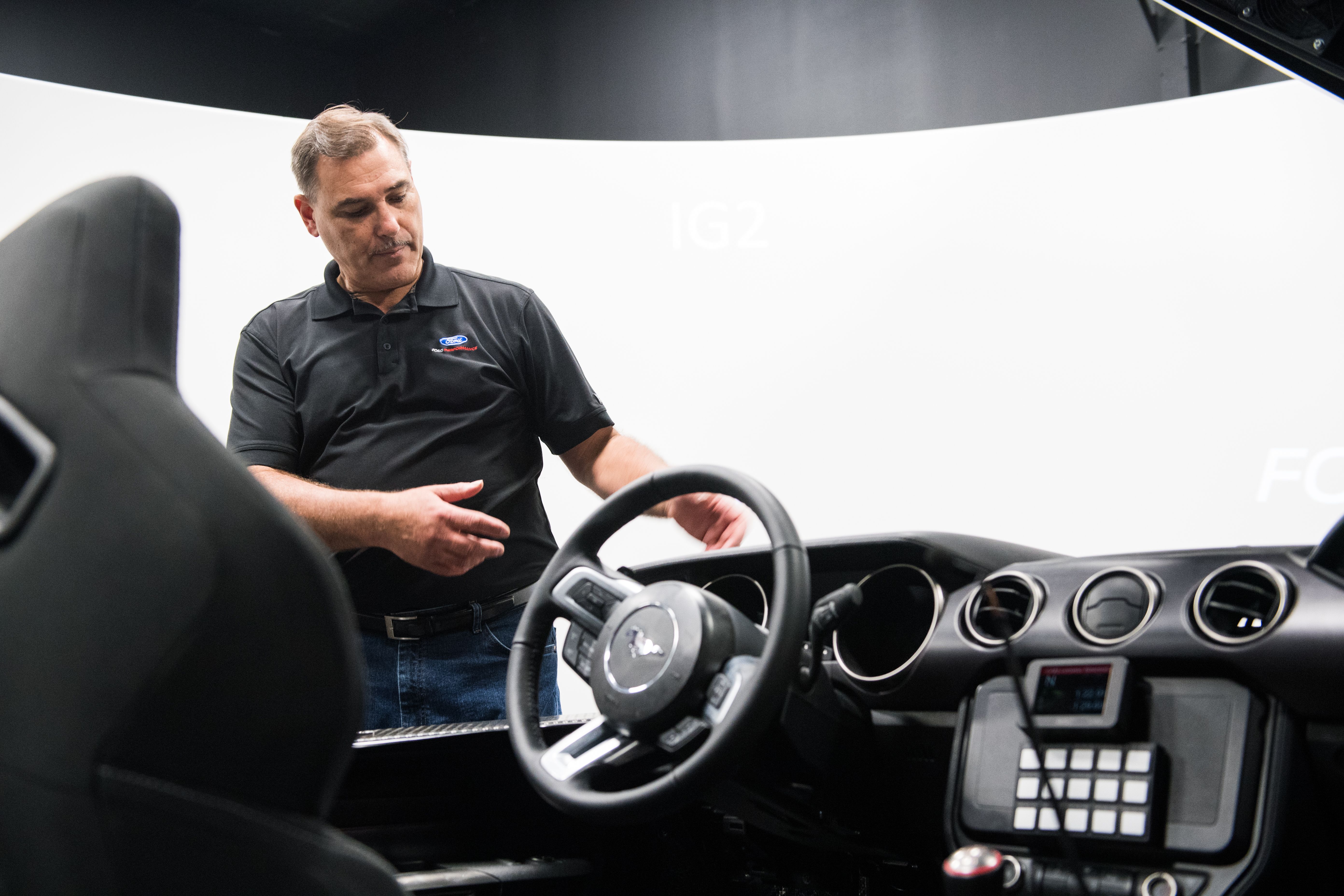Ford Performance has a super-cool, state-of-the-art racing simulator, and it’s not afraid to use it on its street cars as well. That’s how the freshly-released Mustang Mach-E became the first road-going Ford that had its parameters optimized using the 3D sim located in Concord, North Carolina.
Once the Ford GT was out of the pipeline and the Blue Oval could finally think about planning a return at Le Mans, the need for a racing program spruced to attention. To sustain it, Ford built the 33,000-square-foot Technical Support Center which helped other similar efforts along the way. But until now, it was never used in the development of a mass-produced street-legal car. The Mach-E changed that.
Pick any electric car on sale today and you’ll be sure of one thing: the tech package offered is of the hefty variety. It doesn’t matter the make or the model, every EV is trying to stand out in this department. With the Mach-E, Ford has gone even further.
According to CNET’s Roadshow, the simulator is designed to allow Ford’s crew to replicate every car currently found in the Blue Oval’s lineup, together with future models, of course. Technically, today you can now sit in the Ford GT’s cockpit while one hour later, you can find yourself “driving” the new 2020 Ford Focus RS.
That way, there’s no need to over-complicate things with physical prototypes and the tricky logistics that come with having to ship cars to various places around the world, cost included (a trip to the Nurburgring costs around $200,000, according to the same article). Oh, and the simulator can be loaded up with a digital version of pretty much every race track in the world, provided it’s been scanned in advance.
Coming back to the Ford Mustang Mach-E, a lot of the computer-aided tuning went towards the Mach-E's four-wheel-drive system that can apply torque independently to the front and rear axles. Ford says the setup has been optimized for “excellent traction on the road,” especially in wet and snowy conditions, where control is crucial.
Then there’s the performance aspect.
Final Thoughts
See, when your grandpa came back home from World War II, all he wanted to do (besides having sex) was settle in a nice house, start a family, and buy a car. Your grandpa, however, had other demands from the four-wheeled vehicle that was supposed to take him from A to B. Today, millennials aged thirty to forty who can afford to buy a car will demand totally different things. Technology is a must-have prerequisite. That desire gets stronger when it comes to EVs, and since these contraptions are widely regarded as the future, they must be overly tech-y to outrank their internal combustion engined peers. And since Tesla has educated the buyer to expect flashing performance when it comes to acceleration, every respectable future EV will have to tick that box too.




